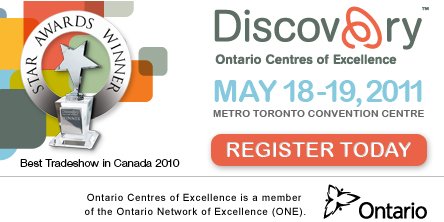 I am a huge F1 racing fan. And I was impressed to see a group of Ontario high school students participating in F1 in Schools at the Ontario Science Centre. It is an amazing concentrated effort to bring together partners and create an educational program for the succession of the people that keep Formula 1 teams building new innovations (that in turn inthrall an audience). The program is a multi-disciplinary challenge for students aged 9 to 19 years to design, build and race gas powered balsa wood F1 cars. What a great opportunity to build the next generation of engineers and designers that are interested in 3-D manufacturing, CAD/CAM, computational fluid dynamics, aerodynamics, engineering, etc. It provides a training ground to ensure that Formula 1 teams have an educated talent pool with practical experience and excitement.
I am a huge F1 racing fan. And I was impressed to see a group of Ontario high school students participating in F1 in Schools at the Ontario Science Centre. It is an amazing concentrated effort to bring together partners and create an educational program for the succession of the people that keep Formula 1 teams building new innovations (that in turn inthrall an audience). The program is a multi-disciplinary challenge for students aged 9 to 19 years to design, build and race gas powered balsa wood F1 cars. What a great opportunity to build the next generation of engineers and designers that are interested in 3-D manufacturing, CAD/CAM, computational fluid dynamics, aerodynamics, engineering, etc. It provides a training ground to ensure that Formula 1 teams have an educated talent pool with practical experience and excitement.
It has started me wondering about the role we play in exciting the next generation of entrepreneurs. I remember reading that career choices are made by Grade 11 (source needed, I think it was in discussion around STEM careers and girls in IT from the Microsoft DigiGirlz program however I am not able to find the reference). Much of the work and research seems focused on increasing the number of girls that choose Science, Technology, Engineering, and Mathematics.
In the US there is the work of the Kauffman Foundation that supports entrepreneurship through education, training, policy development and other activities.
“The Kauffman Foundation is working to further understand the phenomenon of entrepreneurship, to advance entrepreneurship education and training efforts, to promote entrepreneurship-friendly policies, and to better facilitate the commercialization of new technologies by entrepreneurs and others, which have great promise for improving the economic welfare of our nation.”
I really like how the Kauffman Foundation has divided up their Entrepreneurship Track: Youth Entrepreneurship; Minority Entrepreneurship; Higher Education; Capital, Markets and Economics; Knowledge, Training and Networks and Global Entrepreneurship. This division allows for the creation of programs, grants and offerings that support different strategic needs of each group.

I am really impressed with the efforts of the team at Communitech. They are doing a great job building the programs, partnerships, and policy work that supports the efforts of Waterloo Region. They have identified the gap left by many of the University focused programs like UW Velocity and Impact, by building and supporting the activities to attract and engage students before they make their post secondary decision. Communitech delivers programs like:
It is great to see that Waterloo Region really has an institution that is dedicated to supporting technology companies and startups. And is developing the necessary programs to interest kids in making STEM education and career choices. It shouldn’t be a surprise given that UWaterloo has a pioneered cooperative education program that revolutionizes the career experiences available to students.
There are other programs available that typically focus on post-secondary students We have programs like the:
I wonder who outside of Communitech (and maybe BCIC on the west coast) working on programs that support the development of entrepreneurship careers. Are there good global examples of entrepreneurship education and engagement for middle school or high school kids? Where can find other examples of what is working?



 Some rights reserved by Terriko
Some rights reserved by Terriko
What programs can startups take advantage to find talent possibly with subsidies (yeah I can’t believe I’m saying that) to help develop the next generation of founders. The Government of Canada – Canada Business has a list of Grants, Contributions & Financial Assistance that is a great starting point for getting access.
What would be beneficial to startups is an agency that actively matches students and funding programs with my current business needs and stage of corporate development. Rather than relying on me to change my focus from product development, customer development, sales and marketing to educational program participation. It would be great if there was an member-driven organization like Communitech that was focused on making these programs accessible to me.

I want to see programs like Maker Faire (check out the mini-Maker Faire on May 7-8, 2011), Ace Canada Student Entrepreneur Competition, Ivey Business Plan Competition, Moot Corporation, Extreme University, etc. The hard part is how to increase startup participation in the growth, development and refinement of the talent and ideology without distracting founders from their missions to build successful businesses.
Who, how and what should be done to continue to build a culture starting with middle school and high school students to help encourage entrepreneurship as a career path? What do other startups want to see? I’m interested in hearing from John MacRitchie (@jmacritchie), Anand Agarwala (@anandx), Scott Pelton (@spelton), Brian Sharwood (@bsharwood), Lauren Friese (@LaurenFriese), Danny Robinson (@dannyrobinson) and others.

![]()
![]() Some rights reserved by Thomas Hawk
Some rights reserved by Thomas Hawk











